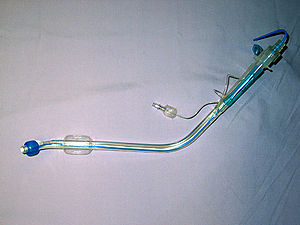Thermoplastic polyester elastomer (TPE E)
TPE-E, sometimes referred to as thermoplastic rubbers, are a class of copolymers or a physical mix of polymers (usually a plastic and a rubber) which consist of materials with both thermoplastic and elastomeric properties. While most elastomers are thermosets, thermoplastics are in contrast relatively easy to use in manufacturing, for example, by injection molding. Thermoplastic elastomers show both advantages typical of rubbery and plastic materials. The principal difference between thermoset elastomers and thermoplastic elastomers is the type of crosslinking bond in their structures. In fact, crosslinking is a critical structural factor which contributes to impart high elastic properties. The crosslink in thermoset polymers is a covalent bond created during the vulcanization process. On the other hand the crosslink in thermoplastic elastomer polymers is a weaker dipole or hydrogen bond or takes place in one of the phases of the material.
- History
- Properties
- Applications
- Processes
- Recycling
- Faq
History
1950: Start of Research on block copolyester elastomers
1960s: Research breakthroughs made styrene block copolymers available
1970: production of PBT/PTMO based copolyesters with commercial interest
Properties
TPE is a plastic that bends, squeezes, breaths, seals, bounces. It is an elastomer with a very broad temperature range of use. It combines a low Tg (up to -70°C) with a high melting temperature (>200°C). Therefore the materials show excellent low temperature ductility combined with sufficient stiffness and tear strength at high temperatures. Moreover the TPE-E show very good thermo-oxidative stability and good chemical resistance especially against apolar chemicals like greases and oils. Another very strong property of Copolyetheresters is its excellent fatigue resistance.
Compared to other TPE types TPE-E show a very good process ability in different processes, like injection moulding, extrusion or blow moulding. A special property of TPE-E films is its resistance to water combined with very high water vapour permeability.
Applications
TPE-Es find large application in the automotive sector and in household appliances sector.
TPEs are used in snowmobile tracks where stiffness and abrasion resistance is at a premium.

They are also widely used for catheters where nylon block copolymers offer a range of softness ideal for patients.

TPE is also finding more and more uses as an electrical cable jacket/inner insulation. TPE is also used in some headphone cables.
It is also used for sport equipments.

Processes
Copolyetheresters (TPE-E) are semi-crystalline thermoplastic elastomers, which are produced by polycondensation of DMT with a short chain and a long chain diol. Most commonly BDO (butanediol) and PTMO (polytetramethyleneoxide) are used as diols. However, also other types of diols are commercial. The polycondensation in the end leads to a multiblock copolymer. The chemical structures are illustrated as follows

Recycling
Compared to traditional rubber compounds, thermoplastic elastomers are recyclable. Waste that is produced during shaping can be fully reused as illustrated below:

